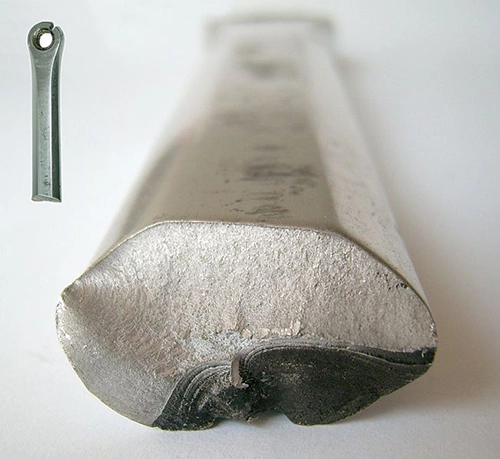In the complex world of engineering and materials science, understanding the underlying causes of component failures is crucial for ensuring reliability and safety. One of the most insidious culprits behind these failures is metal fatigue, a phenomenon that can lead to catastrophic outcomes if not properly identified and addressed. This article delves into the intricacies of metal fatigue, offering insights into how to recognize this material failure mode.
How to tell if material failure is the result of fatigue?
To determine if a component has failed due to fatigue, one must look for specific indicators. A fatigue crack often originates at places where stress is concentrated and can, when it is large enough, be observed with the naked eye. This is a clear sign that the material has been subjected to cyclic loads that caused stresses lower than the material's static tensile strength. Typical characteristics of a fracture surface after fatigue include striations and beach marks, which indicate the progression of the crack over time.
Metal fatigue, also known as material fatigue, is a phenomenon where a component fails under repeated loads that are significantly lower than the loads required to cause failure in a single application. This process is influenced by various factors, including the presence of cyclic loads, the nature of the stresses (especially tensile stresses), and the location of stress concentrations, such as small holes, sharp edges, and notches. In welded structures, the likelihood of fatigue is considerably higher at or near the welds, primarily due to the residual stresses that arise during welding. More detailed information on this topic can be found in residual stress in welded structures.
What does a fatigue fracture surface look like?
A fatigue failure face, or fracture surface, has distinctive features that can help identify it as resulting from fatigue (see figure 1). The appearance of the fracture surface in fatigue failure can be described in detail as follows:
- Initiation site: The fatigue failure process begins at the initiation site, which is often a point of stress concentration on the material's surface. This could be due to microscopic defects, surface discontinuities, or areas of high stress. The initiation site might appear as a small, smooth area when viewed under magnification.
- Propagation zone: As the crack grows due to repeated stress cycles, it leaves behind distinct marks known as striations or beach marks. These marks are essentially parallel lines that represent the position of the crack front at various stages of its growth. The propagation zone can exhibit:
- Striations: Fine lines observed under high magnification that indicate the incremental advance of the crack with each loading cycle.
- Beach marks (ratchet marks): These are more macroscopic features that can sometimes be seen with the naked eye. They appear as semi-circular lines that radiate from the crack initiation site, resembling the rings of a tree trunk. Beach marks are typically formed under conditions of variable stress amplitude, and they map the history of crack growth over time.
- Final fracture area: This is the portion of the fracture surface where the material ultimately failed after the crack reached a critical size. The final fracture area is usually rough and fibrous in appearance, contrasting with the smoother features of the propagation zone. This area indicates rapid failure and may show signs of ductile overload fracture, with features such as dimples in metals that underwent final failure in a ductile manner.

(source: Lokilech).
The overall appearance of a fatigue failure face is often likened to a clamshell, with the smooth, flat initiation and propagation zones forming the bulk of the surface, and the rough, irregular final fracture area at one end. The transition from the smooth propagation zone to the rough final fracture area can be quite distinct, providing a visual clue to the progression of the fatigue failure.